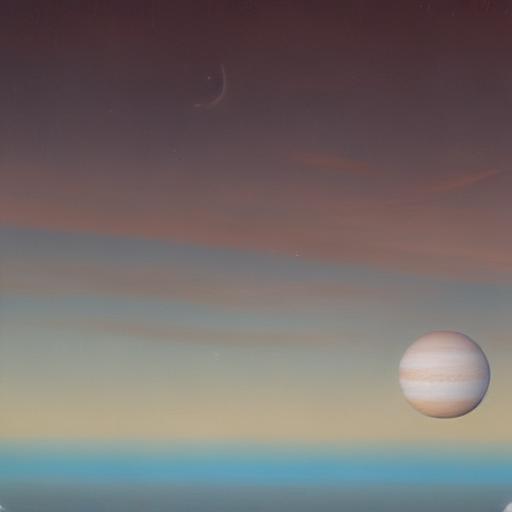Jupiter’s Great Red Spot could be visible as it pairs with Venus in a close conjunction on Aug. 12, giving skywatchers a rare chance to spot the giant planet’s storm while two of the solar system’s brightest worlds share the view.
Key details:
– On Aug. 12, Venus and Jupiter will appear less than a degree apart, about the width of a pinkie held at arm’s length. They’ll be visible together in the dawn sky.
– Viewing times: the pair rise around 3 a.m. local time and set around 6 a.m. local time. Exact times vary by location, so check your local rise and set times to plan your observing session.
– Where to look: they’ll rise in the east, in the direction of the constellation Gemini, climbing to roughly 20 degrees above the horizon before sunrise. Choose a flat, unobstructed eastward viewing site.
– Brightness and visibility: Venus is the second-brightest object in the night sky after the Moon, followed by Jupiter. You can spot them with the naked eye, but a backyard telescope or a pair of binoculars will reveal more.
– Through a telescope or binoculars: you may be able to see Jupiter’s cloud bands and, with luck, its Great Red Spot. The Red Spot is a storm spanning about twice Earth’s diameter and comes into view as Jupiter rotates roughly every 10 hours. The Red Spot’s transit, when it crosses Jupiter’s meridian, is the best time to look for it.
– How to time the Red Spot: you can use skywatching tools (such as a transit-time finder) to see when the Red Spot crosses Jupiter’s meridian.
– Venus’s phases: just like the Moon, Venus shows phases when viewed through a telescope. Its phases depend on its position relative to Earth and the Sun, and Venus takes 584 days to complete its cycle.
– Moon considerations: the Moon will be in a waning gibbous phase (about 90%–95% illuminated) after the recent full Moon. It rises around 9:30 p.m. and sets around 10 a.m. local time. While the Moon may brighten the sky, Venus and Jupiter remain bright enough to stand out, especially if you observe from a dark site with limited Moon glare or by positioning trees or structures to block the Moon’s glow.
– Staying with the pair: if you miss the exact conjunction, Venus and Jupiter will remain close for the next couple of nights, slowly drifting apart as August progresses.
What to do for the best experience:
– Find a dark, open site with a clear view to the east and minimal trees or buildings to the horizon.
– Bring a stable setup: a tripod for binoculars, or a small telescope with proper collimation and focus.
– Be patient with the sighting: the early morning darkness helps; give your eyes time to adjust.
– If you’re into photography, a tripod, a wide-to-medium focal length, and multiple short exposures can yield pleasing shots of the pair with the Moon in the background.
Positive note:
This celestial pairing offers a memorable, family-friendly spectacle that highlights the dynamic dance of planets in our solar system and the striking beauty of Jupiter’s Great Red Spot. It’s a reminder that the night sky still holds timeless wonders for curious observers.
Summary:
A rare dawn conjunction on Aug. 12 brings Venus and Jupiter close in the eastern sky, potentially letting observers glimpse Jupiter’s Great Red Spot through modest optics. The pair will be visible for a few nights around the conjunction, with best viewing in dark, unobstructed locations before sunrise. Positive, hopeful, and science-rich viewing for sky enthusiasts.
